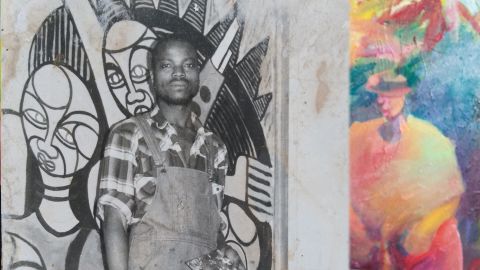Verena Kyselka

Verena Kyselka, Visual Voices in Disremembered Histories (2024), film still showing Dito Tembe in Schwerin in 1986. © VG Bild-Kunst, Bonn 2024, courtesy of the artist
Verena Kyselka studied fine art at the Bauhaus University in Weimar and developed her artistic work in the underground scene of the German Democratic Republic (GDR) in the 1980s, above all in the framework of the feminist performance group Exterra XX. Her works range from video installations to performances, exploring self-determination, gender roles, as well as socio-political, historical, and transcultural entanglements—themes that depart from her own biography. Embedded in her long-term project Territory of Intimacy, she has pursued artistic investigations in, amongst other countries, Albania, Armenia, Taiwan, Oman, and Kyrgyzstan, always in close cooperation with various local protagonists. She explains her fascination for transitional cooperation as follows: ‘What I find there is often other than expected, and simultaneously reformulates the questions that I have posed: “What is it that touches us? And what influences our own history?”’ In the specially commissioned multi-channel video installation, the artist brings together interviews with former contract workers, students, and other contemporary witnesses who came to the GDR from countries such as Angola, Mozambique, Cuba, and Vietnam and have mostly remained in Germany post-unification. Thus, she opens a room within a room—a memory space shaped by (post-)migrationary knowledge and formed by narratives and experiences
Commissioned by Haus der Kulturen der Welt (HKW), co-produced by Verena Kyselka and HKW, 2023–24.
Works in the exhibition: Visual Voices in Disremembered Histories (2024), 4-channel video, German with English subtitles, comprising Stimmen von Künstler:innen [Voices of Artists] (2024), interview with Teresa Casanueva, Dito Tembe, Mona Ragy and Enayat, 31′5″; Stimmen aus Mosambik [Voices from Mozambique] (2024), interview with Adelino Massuvira, 28′5″, and Viktor Faustino, 29′15″; Stimmen aus Vietnam, Deutschland und Angola [Voices from Vietnam, Germany, and Angola] (2024), interview with Nguyen Thi Ung, Ilona Schiller, and José Paca, 49′10″. Courtesy of the artist